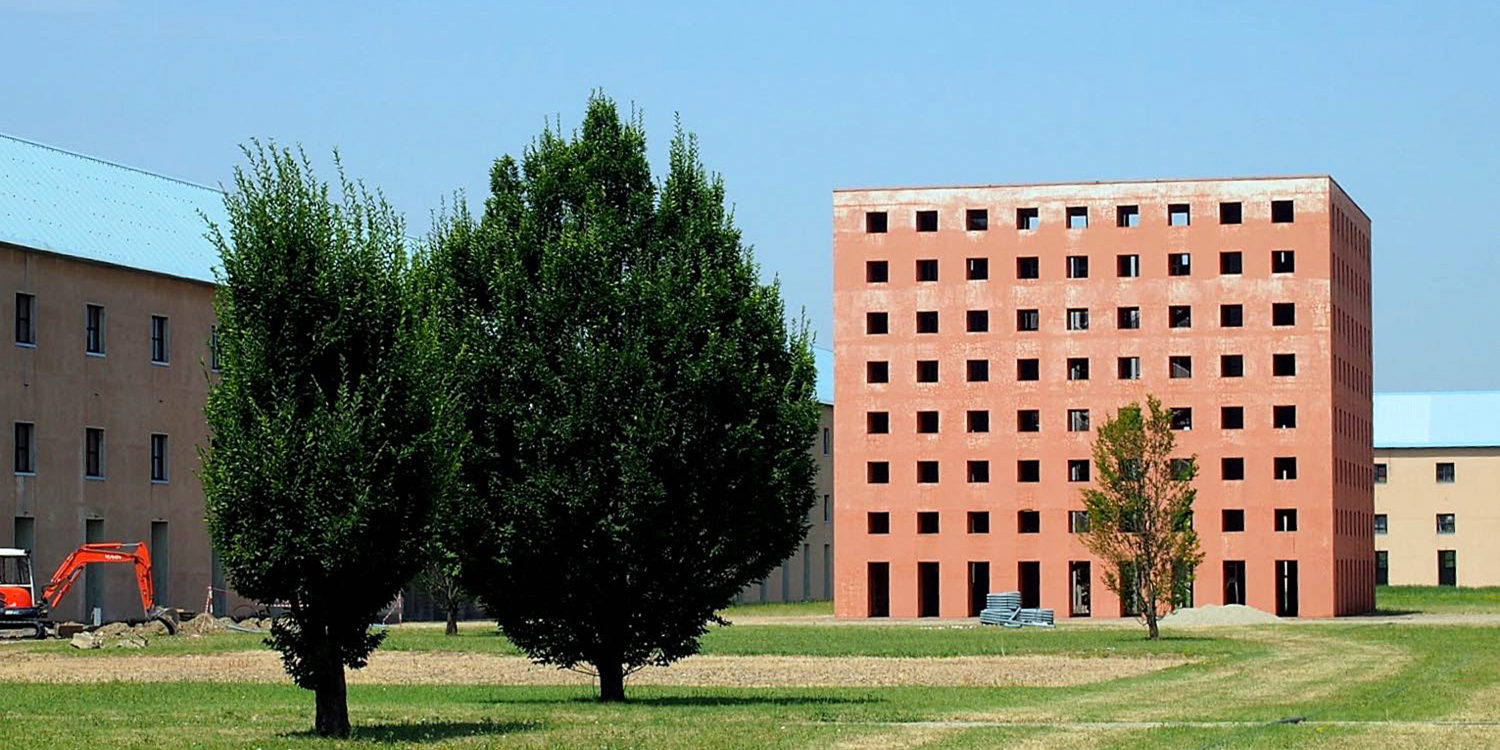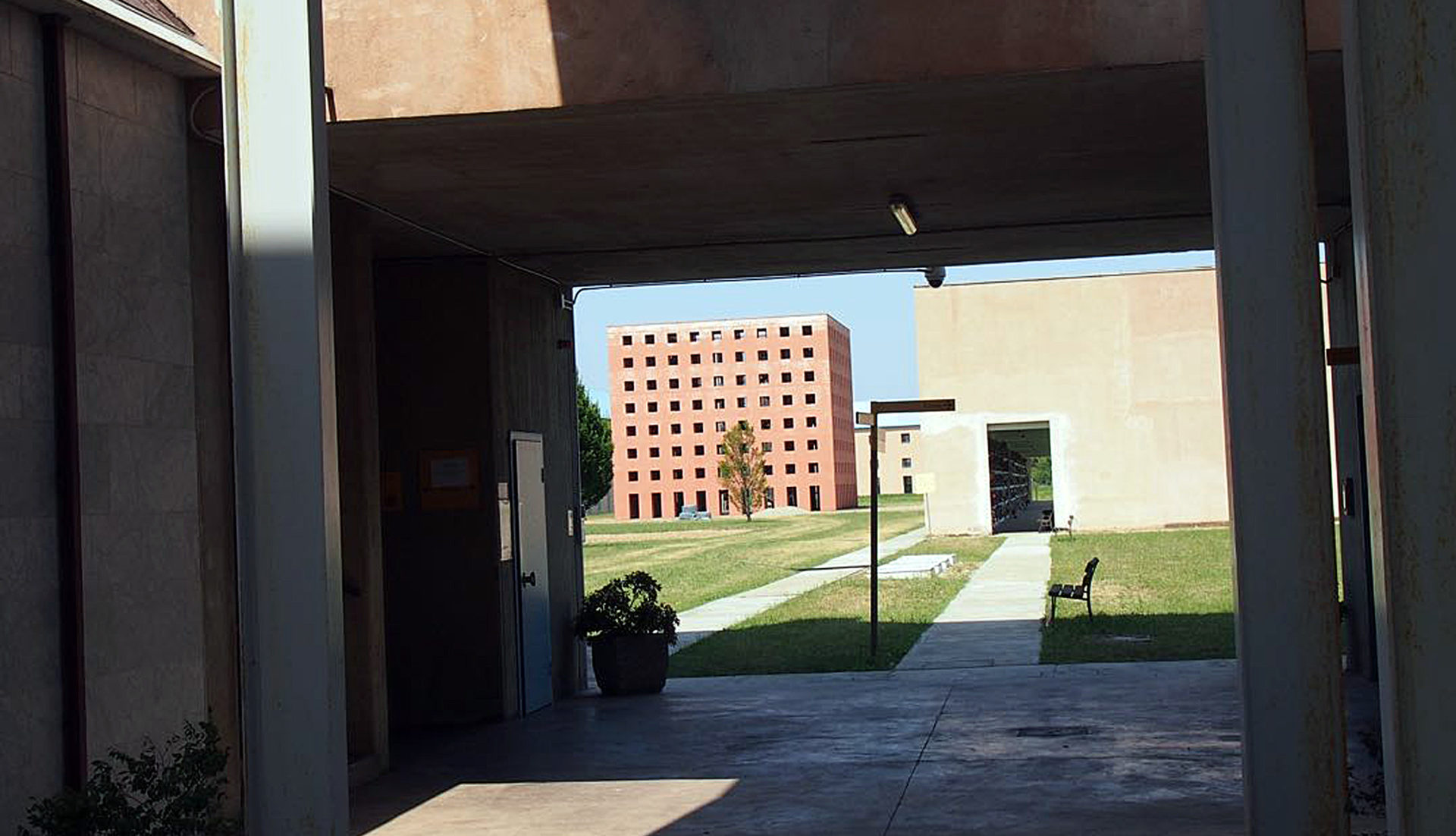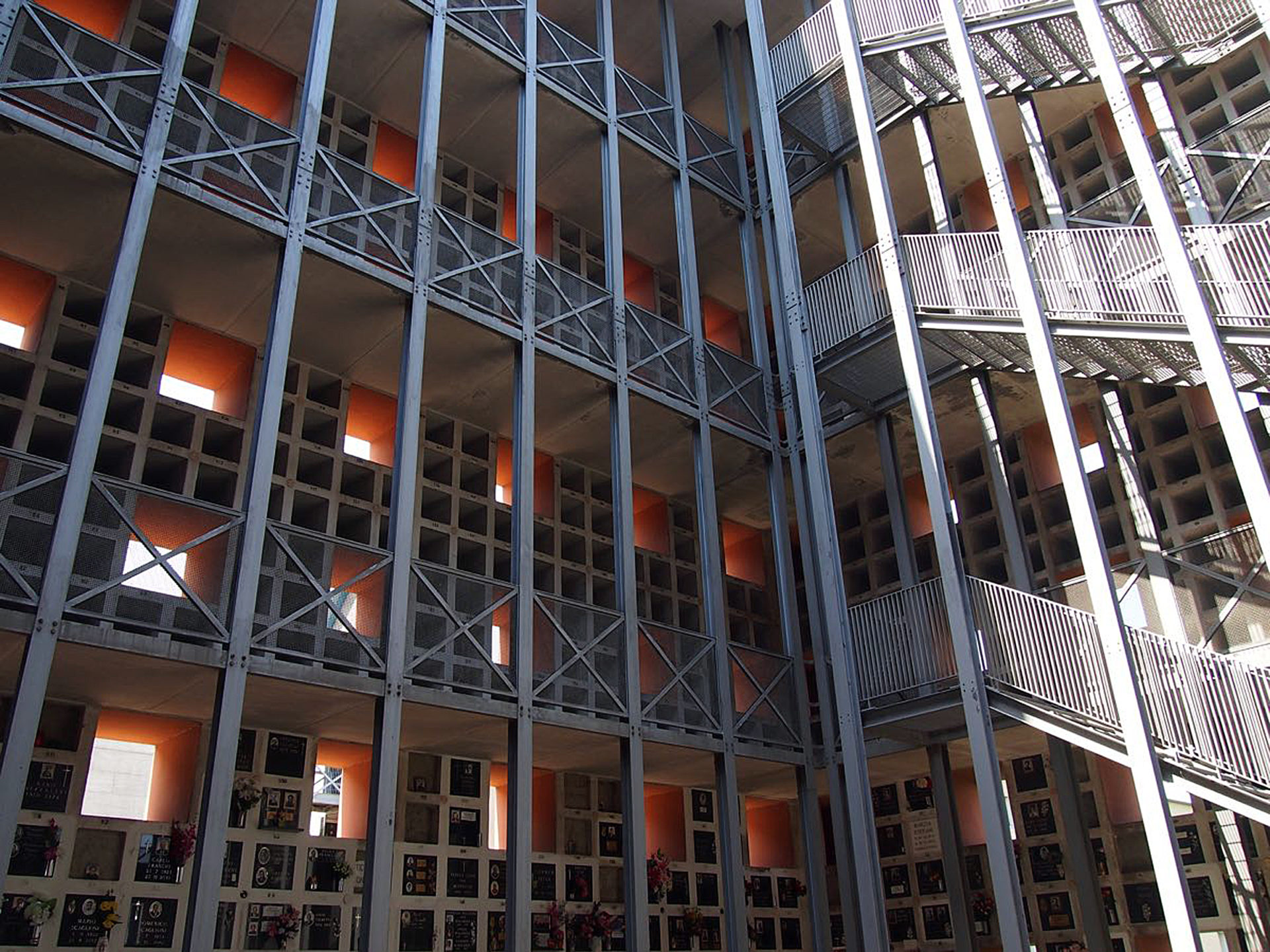Thirty minutes’ walk from Modena train station, the village of San Cataldo has the look and feel of a forgotten town, especially at the end of a seemingly endless trek through the heart of a deserted industrial district in the +40C heat of summer. When you ask the locals in the much prettier neighbouring city of Bologna, no one recommends Modena, least of all to go and see a cemetery on the town’s outskirts.
But in architectural circles San Cataldo Cemetery is very famous. The new, unfinished section was designed by the great Italian postmodernist architect, designer, writer and theorist, Aldo Rossi. Built at the genesis of postmodern architecture, there’s something peculiarly beguiling about the cemetery, even in pictures. In fact, especially in pictures, because in real-life it’s altogether confusing.
Rossi won international acclaim for his design, which emerged just as modernist architecture was about to face an avalanche of criticism for its elitist and universalising tendencies and its eschewal of meaning and the history of the surrounding built environment.
Considered one of the first and most important examples of postmodern architecture, the cemetery displays the style’s preference for form over function. The ossuary that sits in the middle of the grounds has minimal room to house the deceased, this job being much more adequately fulfilled by the surrounding buildings. Flying in the face of modernism’s values and aesthetics, the ossuary is an exercise in form and its main aim is to signify.
Approaching death
As if to hammer home the sense that my companions and I had made a mistake even being there, on the approach to the cemetery, we turned the wrong way down what turned out to be a dead-end. We passed a man in a small tractor who stared, gormless, as we walked several hundred yards down the quickly-disappearing track, decided we’d gone the wrong way, turned round and walked back the way we came. He was still staring as we passed him and found the entrance to the cemetery, unhelpful to the end. В
I don’t blame him. We were such a bunch of tourists. I had two cameras round my neck, a baseball cap and the shortest of short shorts, the other two looked a little less out of place, but not much.
The cemetery guard clocked us immediately and despite our best efforts to act dumb she shepherded us to the office and gestured that we weren’t to take pictures without a permit. She was very nice about it. But it worried me that we’d come all this way and for what? Who cares about looking at buildings if you can’t take pictures of them? I jest, but only a little bit.
You’d struggle to engineer a more Kafkaesque scenario. Sat in an aggressively sterile office, enduring an indefinite wait for the faxed stamped permission from an unknown remote authority to say that I, apparently a student from “London University” researching for a project, could photograph a cemetery. I was pretty certain we were going to miss out on account of the 12:30 closing time even if they didn’t out me as a non-student.
But eventually, permit in hand, we proceeded through the old cemetery, taking a few pictures as we went (because we could) until we arrived at the New Cemetery.
Trying in vainВ to encounter death
This somewhat self-indulgent narrative is meant to play into the hands of postmodern architecture and its preoccupation with symbolism. Sitting on the outskirts of a minor Italian city, deserted and requiring a peculiar level of clearance to photograph, these were just the beginning of a series of signs half interpreted in my encounter with the cemetery. The cemetery’s role in the birth  of postmodernist architecture, its current state, and my encounter with it, all serve to neatly sum up the relative success of the movement. Perhaps too neatly, but then this is postmodernism, so it’s fine to narrate…
San Cataldo is utterly bizarre. The ossuary at the centre is unlike any other building you’re likely to encounter. Can you even call it a building? Crossing the wall separating the old and new cemeteries and passing the neo-classical porticoes into the main courtyard of the new cemetery, it’s as if you’ve stumbled upon an anomaly of the 3D realm, not yet sufficiently rendered to seem real.
No, you can’t call it a building. This solid terracotta cube is a shipping container for souls, impermanent as a spell in purgatory. From every angle it’s like you’re looking at a cardboard cut-out. As you approach it loses much of its otherworldliness and looks rather flimsy. Beneath each square window is a grey stain from years of weathering. Inside is an unremarkable, utilitarian metal structure intended to provide access to the graves higher up, whose functionality is somewhat outside the typical postmodernist repertoire.
Cemeteries are pretty strange places at the best of times. But few are as unsettling as the new cemetery in San Cataldo. In its desolation you feel as if something terrible once happened here that the nearby town is trying to forget. In this sense, the vast empty site is somewhat evocative of a former concentration camp, especially in its isolation from the surrounding area. Arguably this is the sign of the cemetery’s ultimate success. It does indeed make you think in a profound way, about death and other things. Mainly death, since you’re surrounded by it.
Yet as the alarm rang to signal closing time, any clarity of interpretation became rather skewed. In all the picture-taking I’d forgotten to drink in the whole scene, so I turned back to behold it once more. Unfortunately I failed in my efforts to possess what was before me. I couldn’t recapture that initial shock at such a peculiar thing, and I failed to sustain a specific engagement with death. The gulf between signifier (the building) and signified (what it was trying to convey) had become too wide.
It was too wide because there were too many distractions: empty plots where the other structures are meant to be, assorted pieces of gardening equipment, piping, and piles of rubble dotted around the site, accumulated weathering, not to mention the sense of a site deserted and the weird opening moments trying to obtain a permit. As its function has hardly been fulfilled, its form is even more evocative of postmodernism’s pursuit of meaning, form, and symbolism. But it’s also evocative of the style’s principal problem. Sure, it manages to trigger a deeper engagement with architecture, but how can you accommodate all the conflicting signifiers that have built up in the four decades since the project was first unveiled? And how can you justify the form if the function is so sparsely filled?
As is often the way with postmodernism, everything is so laden with meaning that you don’t really know where you are anymore. It’s also just a bloody stupid way of designing a building; the intended meaning barely survives the moment when it was first expressed. And then, in the case of San Cataldo, all you’ve got left is a half-empty, unfinished cemetery with assorted maintenance equipment left lying around. Perhaps you can keep drawing meaning from this decay. But lord knows it’s difficult to sustain a deep engagement with life and death after you’ve tripped over a garden hose.






